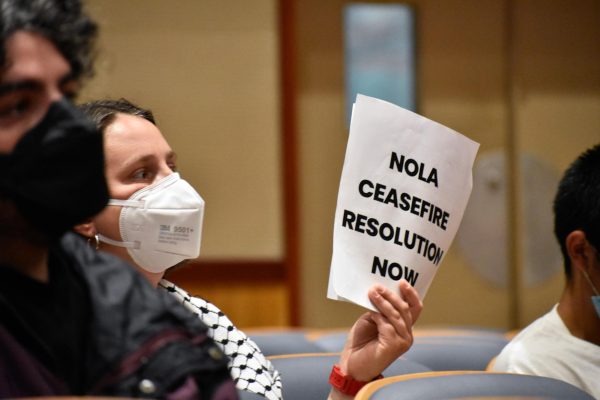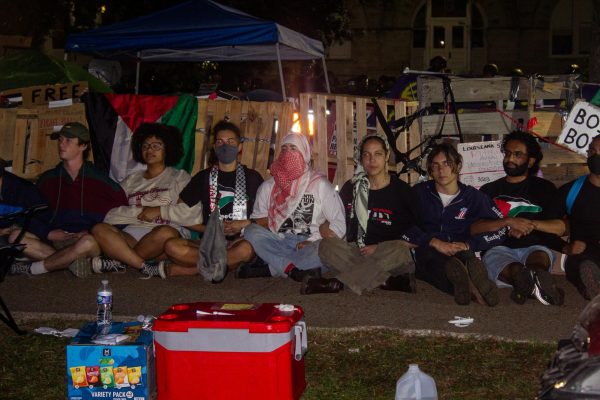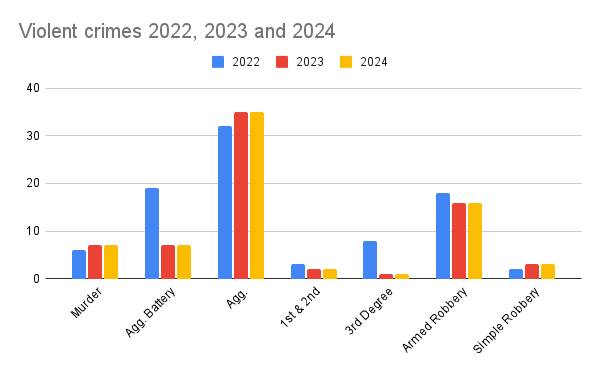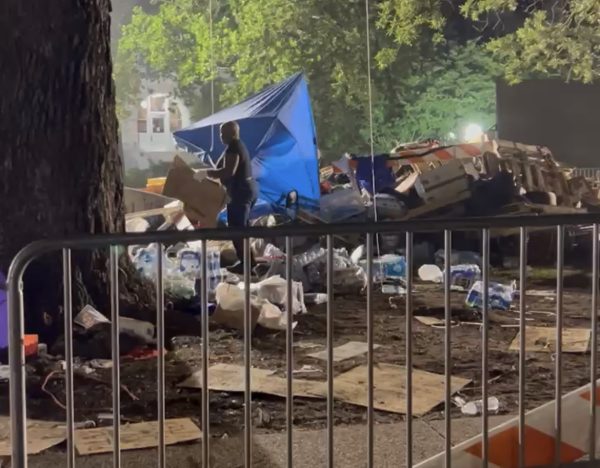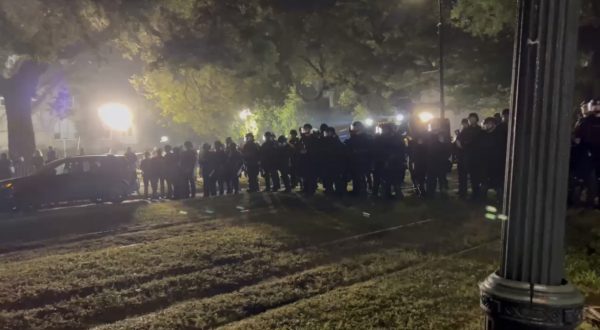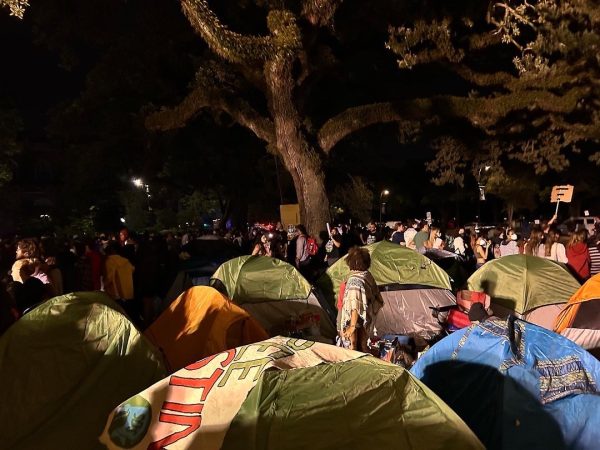Safecam to assist in New Orleans crime reduction
May 2, 2019
According to a recent press conference, the Downtown Development District has partnered with Downtown business owners to fund the installation of 36 new ‘Safecams,’ the public-facing security cameras mounted on businesses and homes throughout the city.
These newly added cameras, unveiled as part of the city-funded ‘Safecam Platinum’ program, will use cloud technology to stream a live, high-definition video feed directly to the Real-Time Crime Center, an auxiliary branch of the New Orleans Office of Homeland Security and Emergency Preparedness. Operating 24/7 with 30 full-time employees, the Real-Time Crime Center streams over 150 private sector camera feeds and 400 city camera feeds throughout the city.
The center was created in 2017 as a part of New Orleans’ $40 million Citywide Public Safety Improvement Plan. Ross Bourgeois, who manages operations at the center, believes the powerful technology behind the new Safecams will be a force in preventing crime and catching criminals.
“Our technology platform is connected to the 911 center, so anytime there’s a call for service, whether police, fire or EMS, the appropriate cameras cue up automatically so we don’t have to go search for them,” Bourgeois said. “About 60 times this year, the cameras have provided relevant evidentiary footage for these incidents.”
In one case last January, after a shooting on the 100 block of Bourbon Street left a man dead, responders at the Real-Time Crime Center used Safecam footage to identify the shooter, who was later brought up on a second-degree murder charge. “Using the network of city-owned cameras and private-sector integrated Safecam cameras in the general area of Bourbon Street, we tracked the subject through several blocks up to where he was finally apprehended on Canal Street near Baronne,” Bourgeois said.
Safecam advocates see the program as a driving force against New Orleans high crime rate, which despite experiencing a decline in past few years, remains one of the highest in the country. According to 2018 city data, the chances of being a victim of crime in New Orleans are 1 in 19, which is 95% higher than the national average, dwarfing similarly-sized cities like Tampa, Florida, where the odds of becoming a crime victim are just 1 in 45. In addition, the likelihood of catching a violent criminal in New Orleans is low. The far majority of homicide cases in Orleans Parish go unsolved. According to the Murder Accountability Project, only 26% of the 217 homicides committed in 2017 resulted in a murder conviction.
Many blame these problems on an inadequate police force. According to the 2018 Annual Crime Coalition Survey, 45% of respondents reported being dissatisfied with NOPD’s performance, citing issues like understaffed patrols and slow response times on emergency calls. However, NOPD has gradually ramped up its recruiting efforts and plans to expand its force in the coming years. The police department currently staffs 1,451 officers and aims to reach former Mayor Mitch Landrieu’s goal of 1,600 officers by 2020.
However, until then, New Orleans Police Chief Shaun Ferguson believes the Safecam Platinum program will work to fill gaps in the police department’s manpower.
“It is very beneficial to have those extra eyes on the street and to assist us in making sure everyone is safe, as well as being able to allocate or reallocate our resources to where the Safecam’s aren’t, to make sure everyone is protected,” Ferguson said. “This particular platform, Safecam Platinum, is just another resource that can enhance our success that we’ve had thus far and reduce violent crime in the city of New Orleans.”
Kurt Weigle, president & CEO of the Downtown Development District, has been instrumental in his advocacy of the Safecam Platinum program. He believes the program will create an alliance between city organizations that could drastically reduce crime in the Downtown area.
“We know that the DDD alone can’t keep Downtown safe, the NOPD by itself can’t and private businesses can’t. But if we come together, then we’ve got a really good shot at making Downtown one of the safest downtowns in all of America,” Weigle said. “By distributing this network so widely across downtown, our goal is to create a downtown where somebody can’t do something they shouldn’t be doing out of the view of camera.”
Weigle hopes that as the Safecams develop a reputation for their effectiveness, lawbreakers will begin to think twice before committing a crime Downtown.
“If somebody who is thinking about committing a crime knows there is this system, and that there’s a high likelihood they will be caught and prosecuted, then maybe they don’t commit the crime in the first place,” Weigle said.
David Abbenante, president of HRI Management, oversees over 2400 apartments in the New Orleans area, as well as several hotels and retail stores within the perimeters of the Downtown Development District. He is an early adopter of the Safecam Platinum program.
“Unfortunately, what happens to a lot of property owners after an incident is they find out their cameras weren’t set right or that their camera wasn’t up to par with where it needed to be to grab that picture. Now we have really good high cameras, tied into someone else, and they’re being monitored,” Abbenante said. “The beauty of this is that the [Real-Time Crime Center] doesn’t have to contact us if they suspect something has happened. They have the ability to just reach in.”
However, some local organizations are concerned by this heightened state of surveillance in the Downtown area. Christine Lobre, program director at Women with a Vision, a community-based organization that represents marginalized women, is vocally opposed to the Safecam Platinum program.
“It is a complete violation of people’s rights to constantly be watched and surveilled.” Lobre said. “As far as the assertion that people are allegedly robbing tourists, doing property crime, trespassing, sleeping in alleyways or urinating in places that are allegedly causing quality of life issues, perhaps the issue is their quality of life issues that the city is not dealing with. We’re not looking at the drivers of disparity. We are not looking at why people may be engaged in survival sex work, engaging in drug use or have mental health issues.”
Lobre believes that instead of funding security cameras, the city should devote its resources to fixing the housing crisis and issues like gentrification and homelessness.
“Until we address those things, constantly watching people in hopes of catching them doing crime . . I don’t see how that can prevent crime,” Lobre said. However, despite concerns, Police Chief Ferguson assures that Safecams won’t be used for surveillance. “New Orleans Police Department is not watching it per se. We are allegation driven with these complaints,” Ferguson said, “It is not a big brother factor, it is not something we are using to spy on anyone. It’s all about making sure that everyone is safe in New Orleans.”
Anthony Campo, project manager of the Safecam Platinum program, assures opposition that the program is designed with a system of checks and balances and does not meet the intrusive criteria of a ‘surveillance’ camera.
“Four components in place to help address privacy concerns. We don’t use audio technology so we cant hear any conversations. We don’t use any facial recognition technology and its truly an incident-driven system in which we use 911 calls to tell us where and when to look,” Campo said.
Safecam Platinum models are available for purchase at Safecamnola.org









